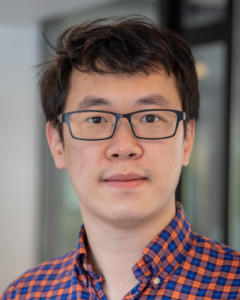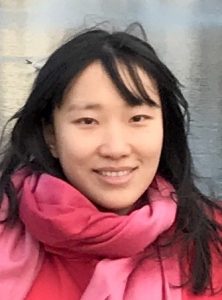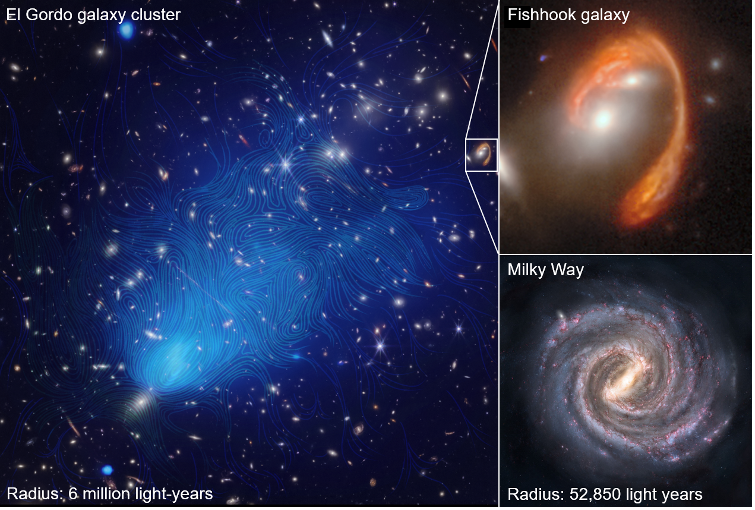Month: February 2024
Annual ‘Wonders of Physics’ show explores numbers in everyday life
“The Wonder of Physics,” an outreach program from the University of Wisconsin physics department, celebrated its 346th show last Saturday — called the “TH3 PHYS1C5 of NUMB3R5”— and performed dazzling physics experiments for an audience of people from all ages and backgrounds. According to the program, its events have impacted more than 300,000 people, including...
Read the full article at: https://badgerherald.com/news/2024/02/21/annual-wonders-of-physics-show-explores-numbers-in-everyday-life/Tiancheng Song awarded Lee Osheroff Richardson Science Prize
This post is slightly adapted from one originally published by Oxford Instruments

Oxford Instruments announced Feb 15 that Tiancheng Song, who will join the UW–Madison physics department as an assistant professor in May, has been awarded the 2024 Lee Osheroff Richardson Science Prize. He is currently an experimental physicist and Dicke Fellow at Princeton University.
Dr. Song is recognized for his efforts in developing and employing various measurement techniques at low temperatures and in magnetic fields to study 2D superconductivity and magnetism in van der Waals heterostructures. His works have uncovered a series of emergent quantum phenomena in 2D superconducting and magnetic systems.
The Lee Osheroff Richardson Science Prize promotes and recognises the novel work of young scientists working in the fields of low temperatures and/or high magnetic fields or surface science in North and South America.
“I am thrilled to be the recipient of the prestigious Lee Osheroff Richardson Science Prize this year! I feel this is a special honour because I am joining the ranks of remarkable scientists who have been awarded this prize for their famous experiments and achievements,” commented Dr. Song.
Tiancheng Song is currently a Dicke Fellow in the Department of Physics at Princeton University. Working with Prof. Sanfeng Wu, Dr. Song recently developed a new technique to investigate 2D superconductivity, strongly correlated phases and the associated unconventional quantum phase transition.
In his work at Princeton, Dr. Song successfully measured superconducting quantum fluctuations of monolayer WTe2 based on the vortex Nernst effect. The result led to the discovery of a new type of quantum critical point beyond the conventional Ginzburg-Landau theory and demonstrated a new sensitive probe to 2D superconductivity and superconducting phase transitions.
Dr. Song’s results have been well recognized by the community with his work being cited over 4,000 times. Dr. Song’s original contributions are demonstrated by the faculty offers he has subsequently received; he will join the University of Wisconsin–Madison as an assistant professor in May 2024.
As part of the prize, Dr. Song will receive $8000 as well as support to attend the APS March Meeting in Minneapolis where he will be presented his award.
The 2024 LOR Science Prize selection committee is chaired by Professor Laura Greene, NHMFL and FSU and includes: Professor Hae-Young Kee, Toronto University; Professor Collin Broholm, Johns Hopkins University; Professor Paula Giraldo-Gallo, University of the Andes; and Dr Xiaomeng Liu, Princeton (2023 winner).
About the LOR Science Prize
Oxford Instruments is aware that there is a critical and often difficult stage for many scientists between completing a PhD and gaining a permanent research position. The company is pleased to help individuals producing innovative work by offering financial assistance and suitably promoting their research work, through sponsoring the LOR Science Prize for North and South America for the past 19 years. The Prize is named in honour of Professors David M. Lee, Douglas D. Osheroff and Robert C. Richardson, joint recipients of The Nobel Prize in Physics 1996 for their discovery of ‘superfluidity in helium-3’.
The previous winners of the LOR Science Prize are Dr Xiaomeng Liu, Dr James Nakamura, Dr Matthew Yankowitz, Dr Sheng Ran, Dr Paula Giraldo-Gallo, Dr Kate Ross, Dr Brad Ramshaw, Dr Mohamad Hamidian, Dr Cory Dean, Dr Chiara Tarantini, Dr Lu Li, Dr Kenneth Burch, Dr Jing Xia, Dr Vivien Zapf, Dr Eunseong Kim, Dr Suchitra Sebastian, Dr Jason Petta, and Dr Christian Lupien.
Ke Fang named Sloan Fellow
This story is adapted from one published by University Communications

Ke Fang, assistant professor of Physics and WIPAC investigator, is among 126 scientists across the United States and Canada selected as Sloan Research Fellows.
The fellowships, awarded annually since 1955, honor exceptional scientists whose creativity, innovation and research accomplishments make them stand out as future leaders in their fields.
Using data from the Ice Cube Observatory and Fermi Large Area Telescope along with numerical simulations, Fang studies the origin of subatomic particles — like neutrinos — that reach Earth from across the universe.
“Sloan Research Fellowships are extraordinarily competitive awards involving the nominations of the most inventive and impactful early-career scientists across the U.S. and Canada,” says Adam F. Falk, president of the Alfred P. Sloan Foundation. “We look forward to seeing how fellows take leading roles shaping the research agenda within their respective fields.”
Founded in 1934, the Sloan Foundation is a not-for-profit institution dedicated to improving the welfare of all through the advancement of scientific knowledge.
Sloan Fellows are chosen in seven fields — chemistry, computer science, Earth system science, economics, mathematics, neuroscience and physics — based on nomination and consideration by fellow scientists. The 2024 cohort comes from 53 institutions and a field that included more than 1,000 nominees. Winners receive a two-year, $75,000 fellowship that can be used flexibly to advance their research.
Among current and former Sloan Fellows, 57 have won a Nobel Prize, 71 have been awarded the National Medal of Science, 17 have won the Fields Medal in mathematics and 23 have won the John Bates Clark Medal in economics.
Xiangyao Yu, assistant professor of computer sciences at UW–Madison, was also named a Sloan Fellow.
Tulika Bose, co-organizer of PURSUE, featured in Symmetry article
The largest magnetic fields in galaxy clusters have been revealed for the first time
By Alex Lazarian, Yue Hu, and Ka Wai Ho
Galaxy clusters, immense assemblies of galaxies, gas, and elusive dark matter, form the cornerstone of our Universe’s grandest structure — the cosmic web. These clusters are not just gravitational anchors, but dynamic realms profoundly influenced by magnetism. The magnetic fields within these clusters are pivotal, shaping the evolution of these cosmic giants. They orchestrate the flow of matter and energy, directing accretion and thermal flows, and are vital in accelerating and confining high-energy charged particles/cosmic rays.
However, mapping the magnetic fields on the scale of galaxy clusters posed a formidable challenge. The vast distances and complex interactions with magnetized and turbulent plasmas diminish the polarization signal, a traditionally used informant of magnetic fields. Here, the groundbreaking technique — synchrotron intensity gradients (SIG) — developed by a team of UW–Madison astronomers and physicists led by astronomy professor Alexandre Lazarian, marks a turning point. They shifted the focus from polarization to the spatial variations in synchrotron intensity. This innovative approach peels back layers of cosmic mystery, offering a new way to observe and comprehend the all-important magnetic tapestry on scale of millions of light years.
A landmark study published in Nature Communications has employed the SIG technique to unveil the enigmatic magnetic fields within five colossal galaxy clusters, including the monumental El Gordo cluster, observed with the Very Large Array (VLA) and MeerKAT telescope. This colossal cluster, formed 6.5 billion years ago, represents a significant portion of cosmic history, dating back to nearly half the current age of the universe. The findings in El Gordo, characterized by the largest magnetic fields observed, provide crucial insights into the structure and evolution of galaxy clusters.

The research is a fruitful collaboration between the UW–Madison team and their Italian colleagues, including Gianfranco Brunetti, Annalisa Bonafede, and Chiara Stuardi from the Instituto do Radioastronomia (Bologna, Italy) and the University of Bologna. Brunetti, a renowned expert in the high-energy physics of galaxy clusters, is enthusiastic about the potential that the SIG technique holds for exploring magnetic field structures on even larger scales, such as the Megahalos recently discovered by him and his colleagues.
Echoing this excitement is the study’s lead researcher, physics graduate student Yue Hu.
“This research marks a significant milestone in astrophysics,” Hu says. “Utilizing the SIG method, we’ve observed and begun to comprehend the nature of magnetic fields in galaxy clusters for the first time. This breakthrough heralds new possibilities in our quest to unravel the mysteries of the universe.”
This study lays the groundwork for future explorations. With the SIG method’s proven effectiveness, scientists are optimistic about its application to even larger cosmic structures that have been detected recently with the Square Kilometre Array (SKA), promising deeper insights into the mysteries of the Universe magnetism and its effects on the evolution of the Universe Large Scale Structure.
First field season for IceCube Upgrade ongoing at the South Pole
Over the past two months, a team of IceCube drill engineers have completed an impressive amount of work during the first of three consecutive field seasons for the IceCube Upgrade. The project is funded by the National Science Foundation and international collaborators.
The goal of the project is to drill seven holes in 2025/2026 and deploy seven more closely spaced and more densely instrumented strings of sensors in the central part of the array, which will improve IceCube’s sensitivity to low energies. Having a productive first field season both sets the Upgrade project up for success and trains the new generation of drillers at the South Pole.
The majority of the team’s engineers come from the University of Wisconsin–Madison’s Physical Sciences Laboratory (PSL), where equipment is fabricated and shipped to the South Pole. Additional drill engineers hail from Sweden, New Zealand, and for the first time, Thailand.
“This year’s drill team is a group of 17 talented professionals who have completed an enormous amount of work,” says Kurt Studt, drill engineer at PSL and the on-ice drill manager for the Upgrade. “We’ve overcome many difficult challenges while dealing with the extreme environment at the South Pole, including temperatures as low as -35 ⁰F and windchills below -60 ⁰F.”
